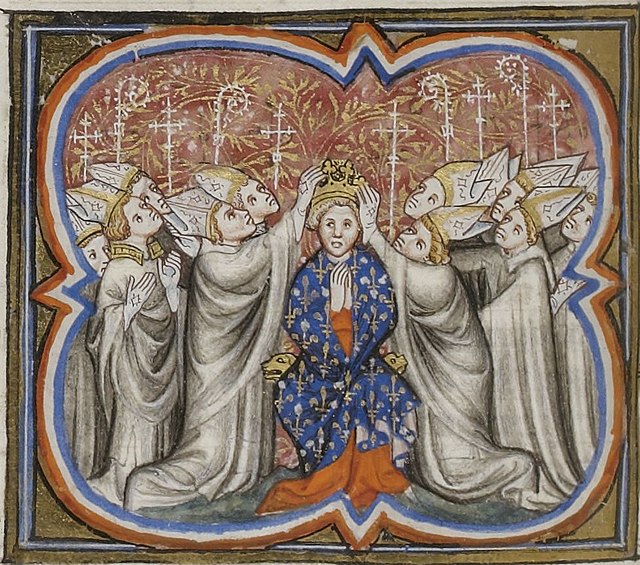Philip II, byname Philip Augustus, was King of France from 1180 to 1223. His predecessors had been known as kings of the Franks, but from 1190 onward, Philip became the first French monarch to style himself "King of France". The son of King Louis VII and his third wife, Adela of Champagne, he was originally nicknamed Dieudonné (God-given) because he was a first son and born late in his father's life. Philip was given the epithet "Augustus" by the chronicler Rigord for having extended the crown lands of France so remarkably.
Seal of Philip II. The legend reads: phillipvs dei gratia francorvm rex ("Philip, by the grace of God, king of the Franks")
Isabelle, Philip's first wife (by the "Maître de Rambures" [fr], c. 1450–1475)
The coronation of Philip II Augustus (from the Grandes Chroniques de France, c. 1332–1350)
Philip II enthroned, portrait by Jean du Tillet, 1555–1566
Louis VII, called the Younger, or the Young, was King of France from 1137 to 1180. He was the son and successor of King Louis VI and married Duchess Eleanor of Aquitaine, one of the wealthiest and most powerful women in western Europe. The marriage temporarily extended the Capetian lands to the Pyrenees.
Effigy of Louis VII on his seal
Equestrian image of Louis VII on two-sided royal seal. Legend: ET DVX AQVITANORVM.
Géza II of Hungary and Louis VII of France. Image from the Hungarian Chronicon Pictum (1358)
Raymond of Poitiers welcoming Louis VII in Antioch (15th-century illustration)


![Isabelle, Philip's first wife (by the "Maître de Rambures" [fr], c. 1450–1475)](https://upload.wikimedia.org/wikipedia/commons/thumb/5/55/Izabela_hainaut2.jpg/425px-Izabela_hainaut2.jpg)





